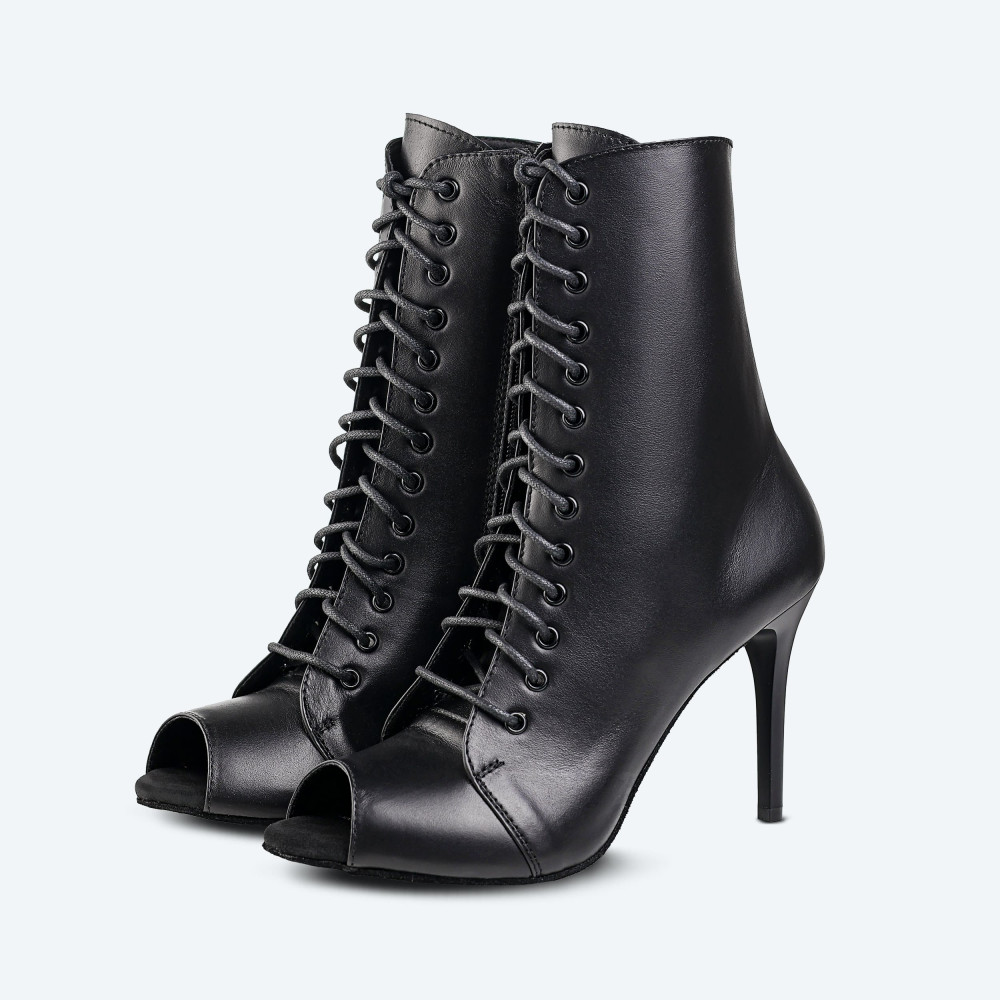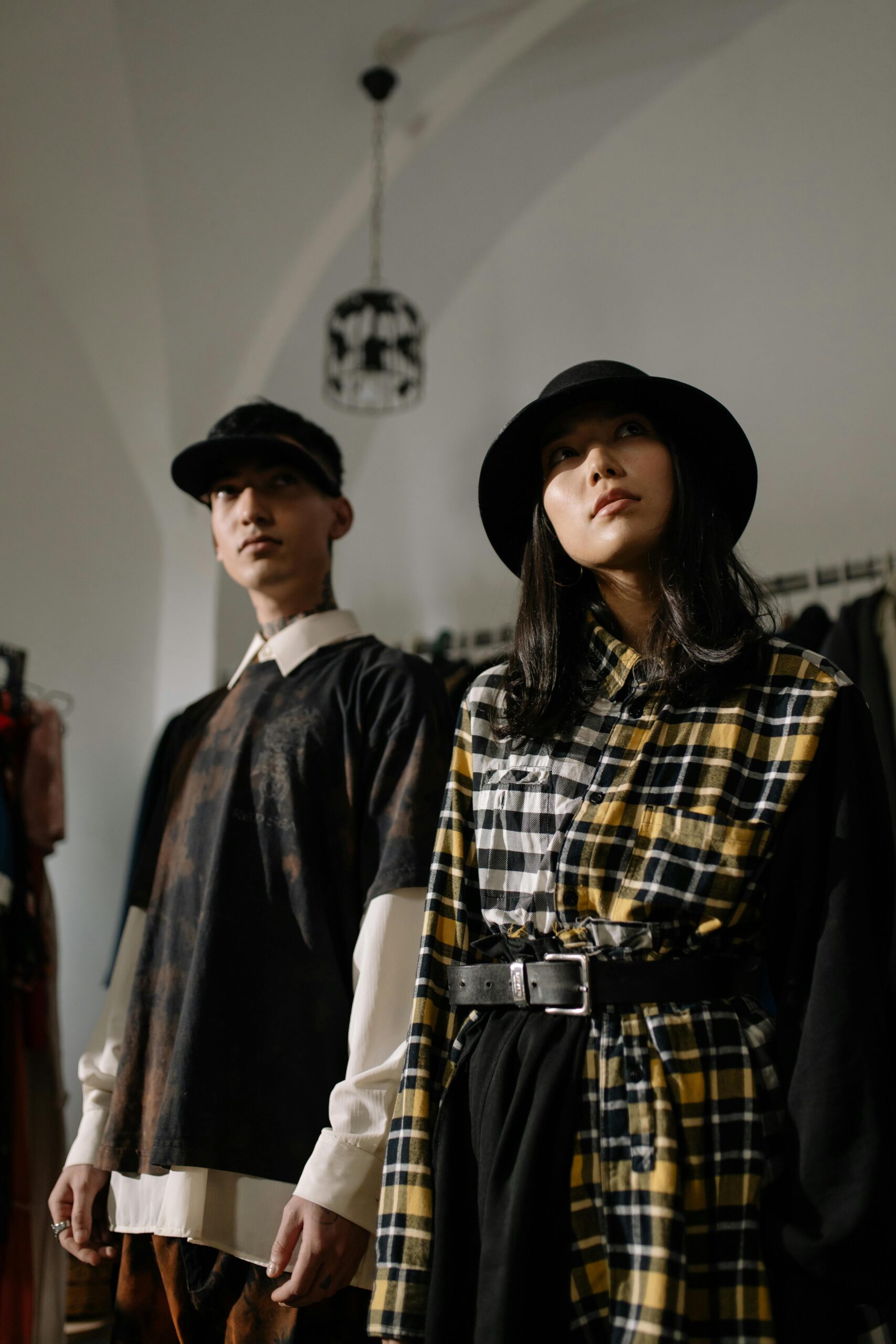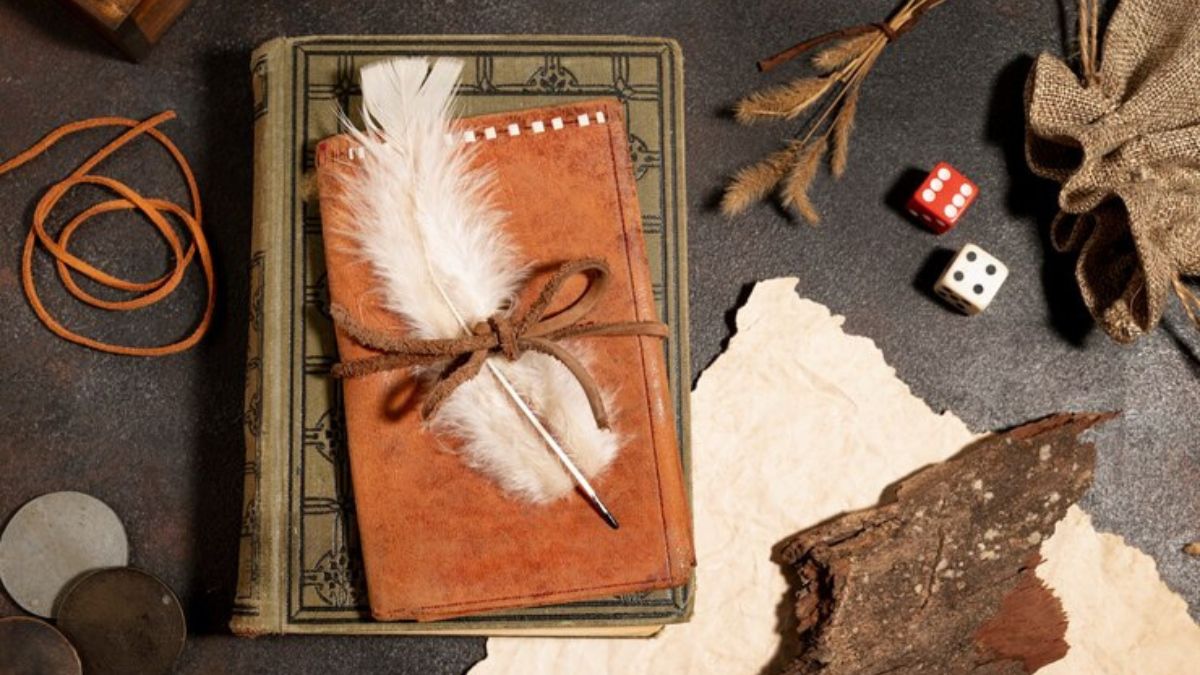FASHION
Dance Shoes for High Heels: How to Choose the Right Pair for Training and Performance

You slip into your new heels and think, “A couple of sessions and I’ll get used to them.” But before long, you’re counting the minutes until the end of class. Sound familiar? The problem isn’t you—it’s the shoes. Not every gorgeous pair is made for dancing. In High Heels, everything matters: stability, support, and comfort. And the more you train, the clearer it becomes—what works in class might not work on stage.
In this article, we’ll explore the difference between training and performance shoes for High Heels dance and help you choose the perfect pair for each purpose.
What Makes High Heels Dance Shoes Different?
Dance shoes are more than just stylish heels. They’re designed specifically for movement and endurance. Visit heelshub.com and you’ll see the difference immediately—high-quality materials, secure support, and bold design all come together to serve the dancer’s needs.
Here’s what truly matters when choosing High Heels dance shoes:
- A stable heel – one that won’t wobble or shift under pressure
- A soft yet supportive sole – flexible enough for rolling through the foot, firm enough for control
- Ankle support – strong straps or lacing to keep your foot secure
These shoes may look like regular heels at first glance, but the moment you step onto the floor, you’ll feel the difference. They move with you—not against you.
But even among professional-grade dance shoes, there’s a key distinction: training and performing are two completely different demands—and your footwear should reflect that.
Best Shoes for High Heels Dance Training: Comfort and Stability First
Training isn’t just about running through choreography—you’re experimenting, refining balance, and repeating movements over and over again until they’re perfect. Your shoes need to support that process—not get in the way.
Ideal training shoes should have:
- A low, wide heel – the lower the center of gravity, the more stable you’ll feel
- A flexible sole – helps with foot articulation, turns, and light jumps
- Strong support – straps, laces, or wraps that keep your foot firmly in place
- Breathable materials – leather or suede that won’t chafe or overheat
The goal of training shoes is to let you focus on the movement—not on pain or blisters. You should be able to dance in them comfortably for a full 60-minute class, not just the first 10. If you want to take them off after 20 minutes, that’s a red flag—it’s time to find a better pair.
Performance Shoes for High Heels Dance: Designed to Dazzle
On stage, everything changes—the lights, the music, the audience, the adrenaline. It’s not just about stability anymore—it’s about impact. Performance shoes are part of the overall look, enhancing your costume and elevating your stage presence. That’s why they often prioritize visual effect over maximum comfort.
Here’s what sets them apart:
- Taller heels – to elongate the leg line and enhance the silhouette
- Glossy or sparkling materials – patent leather, rhinestones, metallic accents; under stage lights, shine is everything
- Striking design – looks that create a “wow” factor, even if they’re not ideal for long wear
Performance shoes might not be the most comfortable option for extended wear—and that’s okay. You wear them for a 3-minute show, not a full hour of drills.
But one thing is crucial: never wear brand-new performance heels directly to a show. Break them in beforehand—test them in the studio, try a few routines, see how they move with your body. A rehearsal is your dress rehearsal.
The Bottom Line: You Need Both
Training and performance shoes are equally important—but they serve different roles. One helps you build skill, the other helps you shine. Respect the difference, and your feet (and your performance) will thank you.
FASHION
The Most Compliment-Getting Perfumes of the Year

Why Compliment Magnets Never Go Out of Style
Every year, certain perfumes rise above the rest for one simple reason — people can’t stop talking about them. Compliment-getting fragrances strike that perfect balance of noticeable but not overwhelming, familiar yet unique, and universally appealing without being basic. They’re the scents people remember, the ones that spark conversations, and the ones that make strangers lean in and ask what you’re wearing. One of the most consistently praised choices in this category is Burberry Brit Sheer Eau de Toilette, a bright, airy, pretty fragrance that draws attention in the softest, most effortless way.
Perfumes that gather compliments tend to work for all seasons, all personalities, and all ages. They feel inviting, clean, fresh, or softly sweet. They project enough for people to notice but stay smooth enough to avoid overpowering. Burberry Brit Sheer Eau de Toilette fits this formula perfectly with its gentle fruitiness and fresh feminine softness.
What Makes a Perfume a Compliment Magnet
A great compliment-getter usually has a few key traits.
- It feels fresh, pretty, and universally pleasant
- It balances sweetness with lightness
- It’s memorable without being loud
- It has a soft projection bubble that draws people in
- It blends with your natural skin scent
- It smells modern and clean rather than heavy
Burberry Brit Sheer Eau de Toilette checks every one of these boxes. It’s that scent people catch on your scarf or in a quick hug, the one that feels soft and graceful without trying too hard.
Soft Fruity Notes That People Love
Fruity-floral perfumes often get the most compliments because they’re uplifting and easy to wear. Bright fruit notes like lychee, yuzu, pineapple, or mandarin instantly feel energetic and pretty. They create a cheerful opening that catches people’s attention in a positive way. Burberry Brit Sheer Eau de Toilette is built on soft fruits that sparkle right from the start. It feels fresh and joyful, making it an instant crowd-pleaser.
Light Florals That Stay Close and Elegant
Compliment-friendly scents rarely rely on heavy florals. Instead, they use sheer, airy flowers like peony, rose, or cherry blossom. These notes feel delicate, modern, and feminine without overwhelming the senses. Burberry Brit Sheer Eau de Toilette leans into these softer florals, making it perfect for everyday wear, office settings, brunch with friends, or any moment where you want to feel fresh and polished.
Clean Musks That Make People Lean In
A soft musk base helps a perfume blend naturally with your skin. Clean musks create that smooth, airy, “I just smell good” vibe that people notice without realizing it’s just perfume doing the work. They also help fragrances last longer while staying subtle. Burberry Brit Sheer Eau de Toilette uses this softness beautifully, creating an inviting, natural finish that feels warm and fresh at the same time.
Why Fresh Perfumes Get So Much Attention
Freshness signals confidence, clarity, and cleanliness. People naturally gravitate toward scents that remind them of fresh air, light fabrics, or crisp mornings. Fresh fragrances feel approachable and likable, which is exactly why they get compliments so consistently. Burberry Brit Sheer Eau de Toilette is one of those clean, breezy scents that smell like a beautiful, modern take on casual femininity.
Versatility Boosts Compliments Even More
The more often you can wear a fragrance, the more compliments you’ll receive. Perfumes that work everywhere — work, errands, lunch dates, casual evenings — end up being the ones people associate with you. Light and fresh fragrances win here because they adapt to almost any setting. Burberry Brit Sheer Eau de Toilette is a perfect example. It feels appropriate anywhere, from an office meeting to a weekend getaway, and that versatility helps it stand out.
Scents That Make People Feel Comfortable Around You
Compliment-getting perfumes don’t just smell good. They make people feel good. Soft, clean scents create a sense of comfort and ease. They don’t invade space. They feel familiar and pleasant even to those who aren’t usually into perfume. This is why so many people respond well to fragrances like Burberry Brit Sheer Eau de Toilette — they give a soft, subtle kind of beauty that feels welcoming.
A Perfume’s Memory Effect
One of the strongest triggers for compliments is memory. Scents that evoke feelings of calm, joy, or nostalgia often spark reactions because they remind people of something positive. Fruity, fresh, floral compositions tend to sit in this category because they feel uplifting and sentimental. Burberry Brit Sheer Eau de Toilette taps into that mood with its soft, pretty blend.
Why Sheer Perfumes Are Trending
Heavy, loud perfumes had their moment. Today, people crave lighter scents that feel breathable and modern. Sheer perfumes work better in more situations, especially when people spend time in shared spaces like offices or public transport. They smell clean, subtle, and refined. Burberry Brit Sheer Eau de Toilette embodies this shift — a fragrance that feels naturally beautiful instead of overly done.
Daytime-Friendly Scents Gather More Comments
People generally give compliments during daytime interactions — at work, at brunch, in class, while shopping. That’s why bright and uplifting scents end up the most complimented. Fresh fruity-florals like Burberry Brit Sheer Eau de Toilette shine in daylight, catching attention in a light and graceful way.
Why This Year Favors Clean Girl Energy
The clean-girl aesthetic is shaping fragrance preferences more than ever. Soft makeup, slicked hair, dewy skin — and perfumes that match. Light, sheer, and fresh scents fit perfectly into this cultural moment. They smell effortless, minimal, and modern. Burberry Brit Sheer Eau de Toilette aligns with that energy, which is exactly why people respond to it so strongly.
A Final Word on Compliment Magnets
The most compliment-getting perfumes of the year share one thing: they make people feel something — freshness, comfort, brightness, femininity. They’re scents that fit everyday life, uplift your mood, and invite connection. Burberry Brit Sheer Eau de Toilette belongs at the top of this category with its soft, breezy, universally loved scent profile.
FASHION
The Psychology of Personal Style: What Your Outfits Say About You

Home improvement is entering a new era. What used to be a straightforward process of repairs, painting, and small upgrades has now transformed into a sophisticated industry shaped by smart technology, sustainability, and evolving homeowner expectations. Whether it’s a kitchen renovation, electrical modernization, or designing multifunctional spaces, the demand for high-quality home improvement services continues to rise.
Today’s homeowners see improvement projects not only as fixes, but as investments in property value, comfort, and modern living standards.
Smart Technologies Are Reshaping the Home
Smart devices have become a core part of renovation planning. Modern upgrades now commonly include:
- App-controlled smart lighting
- Automated climate systems and advanced thermostats
- Integrated home security with cameras and smart locks
- Energy-saving outlets and environmental sensors
Innovations that were once niche are now mainstream. Homeowners want efficiency, automation, and intelligent energy usage — and contractors who understand this technological shift have become essential.
Eco-Friendly and High-Performance Materials
Sustainability plays a major role in today’s home improvement decisions. Homeowners are choosing materials based on durability, environmental impact, and long-term savings.
Popular upgrades include:
- Eco-friendly construction materials
- Low-VOC paints and coatings
- Advanced insulation and airtight sealing
- Water-saving systems and smart irrigation
These choices improve comfort while significantly reducing utility costs — a win for both sustainability and household budgets.
DIY or Professional Help?
While DIY culture continues to grow thanks to online tutorials, most large-scale renovations still require licensed specialists. Structural adjustments, electrical rewiring, plumbing, HVAC installation, and waterproofing are areas where mistakes can become extremely costly.
This is why many homeowners rely on trusted directories and professional listings to locate qualified experts. References such as home improvement services near you help homeowners quickly identify experienced contractors with relevant skills and verified reviews.
Design & Functionality: The Modern Blend
Homeowners now want spaces that are beautiful and functional. Popular trends include:
- Open-layout kitchens and living areas
- Bathrooms with spa-style features
- Hidden storage and minimalist cabinetry
- Rooms optimized for remote work or fitness
Modern renovation projects often involve close collaboration between interior designers, electricians, carpenters, and smart-home specialists to achieve seamless, integrated results.
Skilled Trades Are More Important Than Ever
Demand for skilled trades continues to rise worldwide. Electricians, plumbers, carpenters, masons, HVAC technicians, and tiling professionals are booked months ahead in many regions. As homes incorporate more technology and custom materials, the need for certified hands becomes even more crucial.
The Home of Tomorrow
The next decade of home improvement will focus on smart automation, energy efficiency, and design-conscious functionality. Homes will increasingly become adaptive environments that respond to owners’ lifestyles and technological needs.
Whether planning small upgrades or a full renovation, understanding new trends — and knowing where to find the right professionals — will always be the key to achieving the best results.
The future of home improvement is brighter, smarter, and more efficient than ever.
FASHION
BaddieHub: the Online Playground of Fashion and Trends

Welcome to the vibrant world of BaddieHub, where fashion meets fierce and trends come alive! This online playground has become a hotspot for trendsetters and style enthusiasts alike. With its bold aesthetics and unapologetic attitude, BaddieHub embodies a cultural movement that’s reshaping how we view beauty and self-expression. Here, every click opens a door to inspiration—whether it’s through outfits that scream confidence or makeup looks that redefine glam. Join us as we dive deep into this exciting realm, exploring the rise of baddie culture, its impact on fashion, and what makes BaddieHub an essential destination for those daring enough to embrace their inner baddie.
The Emergence of Baddie Culture
Baddie culture has emerged as a vibrant expression of self-confidence and individuality. Its roots can be traced back to social media platforms, where influencers began showcasing bold fashion choices and unapologetic attitudes.
The term “baddie” encapsulates women who embrace their power through style. Think fierce makeup, body positivity, and a love for all things glamorous. This movement celebrates diversity, encouraging everyone to redefine beauty on their own terms.
As baddie influencers gained popularity on Instagram and TikTok, they created an online community that thrives on empowerment. It’s about more than just clothes; it represents a lifestyle where personal expression reigns supreme.
Fashion brands quickly took notice. Collaborations with baddies have shifted the industry landscape, bringing fresh ideas into mainstream trends. This cultural phenomenon is reshaping conversations around femininity while captivating audiences worldwide.
How BaddieHub is Changing the Fashion Game
BaddieHub is reshaping the fashion landscape, offering a fresh platform for self-expression. It embraces diversity and empowers individuals to showcase their unique styles.
The user-generated content drives trends like never before. BaddieHub allows fashion enthusiasts to share their looks instantly, making it easier for others to replicate or adapt them. This accessibility fosters creativity among users.
Moreover, BaddieHub champions boldness in style choices. From striking colors to daring combinations, the platform encourages members to step outside conventional boundaries.
As influencers navigate this vibrant community, they set new standards that traditional fashion houses struggle to keep up with. The emphasis on relatability and authenticity resonates deeply with audiences looking for genuine inspiration.
BaddieHub isn’t just an online store—it’s a cultural movement redefining what it means to be fashionable today.
ALSO READ: Exploring the Rich History and Cultural Significance of Buší
Top Trends on BaddieHub
BaddieHub is a vibrant hub of creativity, showcasing the latest trends that define baddie culture. Bold hairstyles are making waves, with neon colors and edgy cuts taking center stage.
Streetwear continues to reign supreme. Oversized hoodies paired with form-fitting bottoms create an effortlessly chic look that’s both comfortable and stylish. Accessories play a crucial role too; chunky chains and statement earrings elevate any outfit.
Footwear trends feature platform sneakers and knee-high boots, giving every ensemble an extra edge. Layering is key as well—mixing textures and patterns adds depth to style choices.
Don’t forget makeup! Glowing skin combined with bold lip colors makes for striking looks that catch attention instantly. These elements come together seamlessly on BaddieHub, creating a space where fashion enthusiasts can explore endless possibilities in self-expression.
Controversies Surrounding Baddie Culture and BaddieHub
Baddie culture and BaddieHub are not without their controversies. Critics argue that the aesthetic promotes unrealistic beauty standards. The pressure to conform can be intense, especially for younger audiences.
Some voices in fashion claim baddie culture is overly commercialized. What started as a grassroots movement has transformed into a market-driven phenomenon. This shift raises questions about authenticity and cultural appropriation.
Moreover, there’s debate on whether the emphasis on physical appearance undermines deeper values like self-expression and individuality. Online discussions often become heated, with differing opinions on what it means to be a baddie today.
The influence of social media amplifies these issues, creating echo chambers where dissenting views struggle to break through. As BaddieHub continues to grow, these conversations will shape its future direction and impact within the fashion landscape.
ALSO READ: The Voice of Change: Myliberla Movement Explored
Impact on Social Media and Influencer Marketing
BaddieHub has reshaped social media dynamics. Content creators thrive on its trends, pushing boundaries and defining what it means to be a “baddie.” The platform amplifies voices that embrace confidence and self-expression.
Influencer marketing is evolving. Brands tap into BaddieHub’s aesthetics to target younger audiences who resonate with authentic lifestyles. Influencers showcase bold styles and unapologetic attitudes, creating relatable content that drives engagement.
Visual platforms like Instagram and TikTok are flooded with baddie-inspired looks. Hashtags dominate feeds, making style inspiration accessible at the touch of a finger. This visibility fosters community among followers who share similar interests.
Moreover, collaborations between influencers and brands often reflect BaddieHub’s ethos. Products promoted aren’t just items; they symbolize empowerment and individuality in fashion choices.
Future of Baddie Culture and BaddieHub
The future of BaddieHub and baddie culture looks bright and ever-evolving. As trends shift, so does the community’s creativity. New styles will emerge, reflecting changing societal norms and individual expression.
Digital spaces like BaddieHub are likely to deepen their influence on fashion choices across platforms. Curated content will become more personal, offering tailored experiences for users.
Sustainability may also play a role in shaping this culture. Eco-friendly brands might find a home within the baddie aesthetic, appealing to conscientious consumers looking for style without compromising values.
Moreover, collaborations with mainstream designers could elevate streetwear into high fashion territory. This fusion can spark new conversations about what it means to be a baddie in an increasingly inclusive world.
As technology advances, augmented reality features might allow fans to try on outfits virtually before purchasing them—transforming how we engage with fashion entirely.
Conclusion
BaddieHub has emerged as a vibrant platform, capturing the essence of modern fashion and trends. With its roots in baddie culture, it serves as an online playground where style meets attitude. The emergence of this aesthetic celebrates individuality and confidence, reshaping how we perceive beauty.
Through innovative features and engaging content, BaddieHub is revolutionizing the fashion landscape. It inspires users to explore their unique styles while embracing boldness. Trendsetters flock to the site for inspiration on everything from streetwear to high-fashion looks.
The latest trends on BaddieHub reflect a blend of nostalgia and futurism. From neon colors to oversized silhouettes, each trend embodies a powerful statement that resonates with followers across social media platforms.
However, not all attention surrounding baddie culture is positive. Controversies often arise over appropriation and unrealistic beauty standards prevalent within some aspects of the community. These discussions are crucial for growth and understanding in today’s diverse society.
The impact on social media cannot be underestimated either; influencer marketing thrives here as brands partner with baddies who authentically connect with their audiences. This synergy fuels both personal branding efforts and commercial success.
Looking ahead, baddie culture shows no signs of slowing down. As more individuals embrace self-expression through fashion choices found on BaddieHub, we can anticipate even greater diversity in style representation moving forward.
BaddieHub stands at the intersection of creativity and commerce—an exciting hub for anyone wanting to dive deep into dynamic fashion landscapes while confidently making their mark.
ALSO READ: How Tanzohub is Empowering Data Scientists Worldwide
FAQs
What is BaddieHub?
BaddieHub is an online platform that celebrates bold fashion, self-expression, and the vibrant baddie culture. It offers a space for trendsetters and style enthusiasts to explore and share their unique looks, empowering users to embrace their individuality and redefine beauty standards.
How did BaddieHub become popular?
BaddieHub gained popularity through social media, where influencers showcased bold fashion choices and confident attitudes. The platform’s user-friendly interface and community-driven content quickly attracted a diverse audience, turning it into a go-to destination for style inspiration and trendsetting.
What are some key fashion trends on BaddieHub?
Key trends on BaddieHub include bold hairstyles with neon colors, streetwear featuring oversized hoodies and form-fitting bottoms, platform sneakers, knee-high boots, and statement accessories like chunky chains and earrings. Makeup trends focus on glowing skin and bold lip colors.
What controversies surround BaddieHub and baddie culture?
Controversies include criticisms of promoting unrealistic beauty standards and commercializing a grassroots movement. There are debates about the pressure to conform to certain looks and the potential for cultural appropriation, raising questions about authenticity and the impact on self-expression.
How does BaddieHub impact influencer marketing and social media?
BaddieHub significantly influences social media dynamics and influencer marketing. It provides a platform for influencers to showcase bold styles and authentic lifestyles, driving engagement and brand collaborations. This visibility fosters a community of followers who share similar fashion interests and values.

 LIFESTYLE9 months ago
LIFESTYLE9 months agoThe Disciplinary Wives Club: Spanking for Love, Not Punishment

 ENTERTAINMENT1 month ago
ENTERTAINMENT1 month agoExploring the Kristen Archives: A Treasure Trove of Erotica and More

 BUSINESS9 months ago
BUSINESS9 months agoBrand Visibility with Imprint Now and Custom Poly Mailers

 GENERAL5 months ago
GENERAL5 months ago5 Factors That Affect Tattoo Removal Success

 HEALTH8 months ago
HEALTH8 months agoHappy Hippo Kratom Reviews: Read Before You Buy!

 HOME IMPROVEMENT9 months ago
HOME IMPROVEMENT9 months agoThe Do’s and Don’ts of Renting Rubbish Bins for Your Next Renovation

 TECHNOLOGY9 months ago
TECHNOLOGY9 months agoBlog Arcy Art: Where Architecture Meets Art

 BUSINESS10 months ago
BUSINESS10 months agoExploring the Benefits of Commercial Printing












